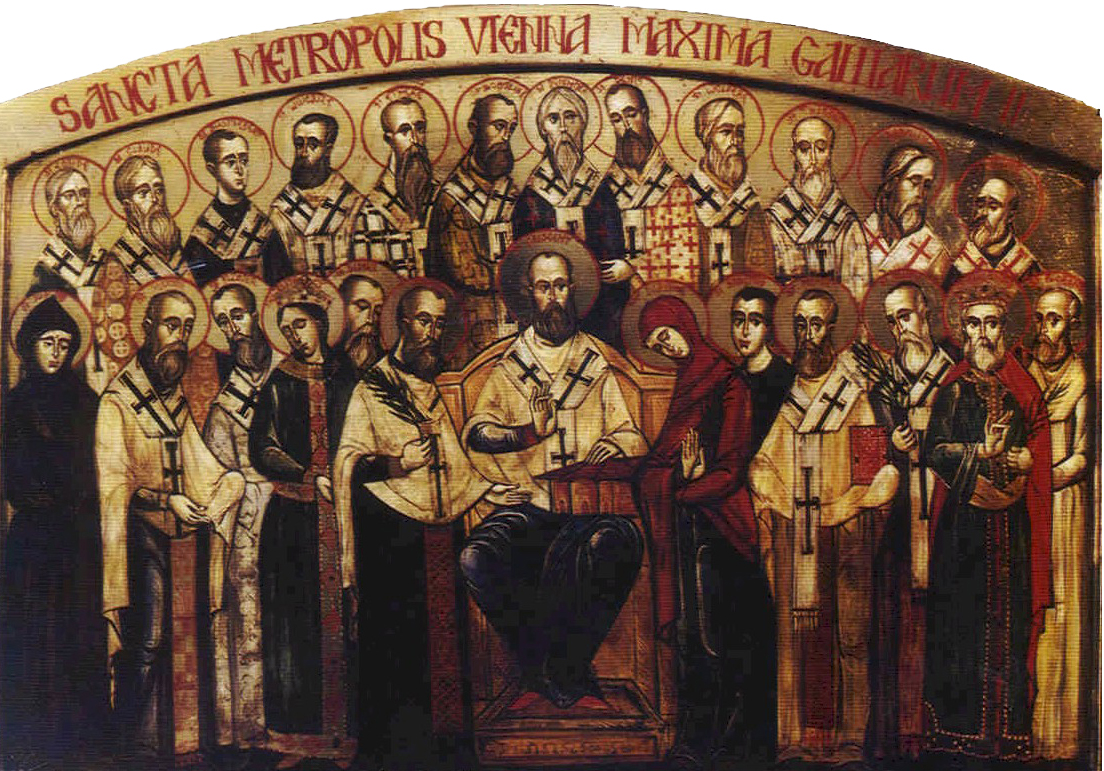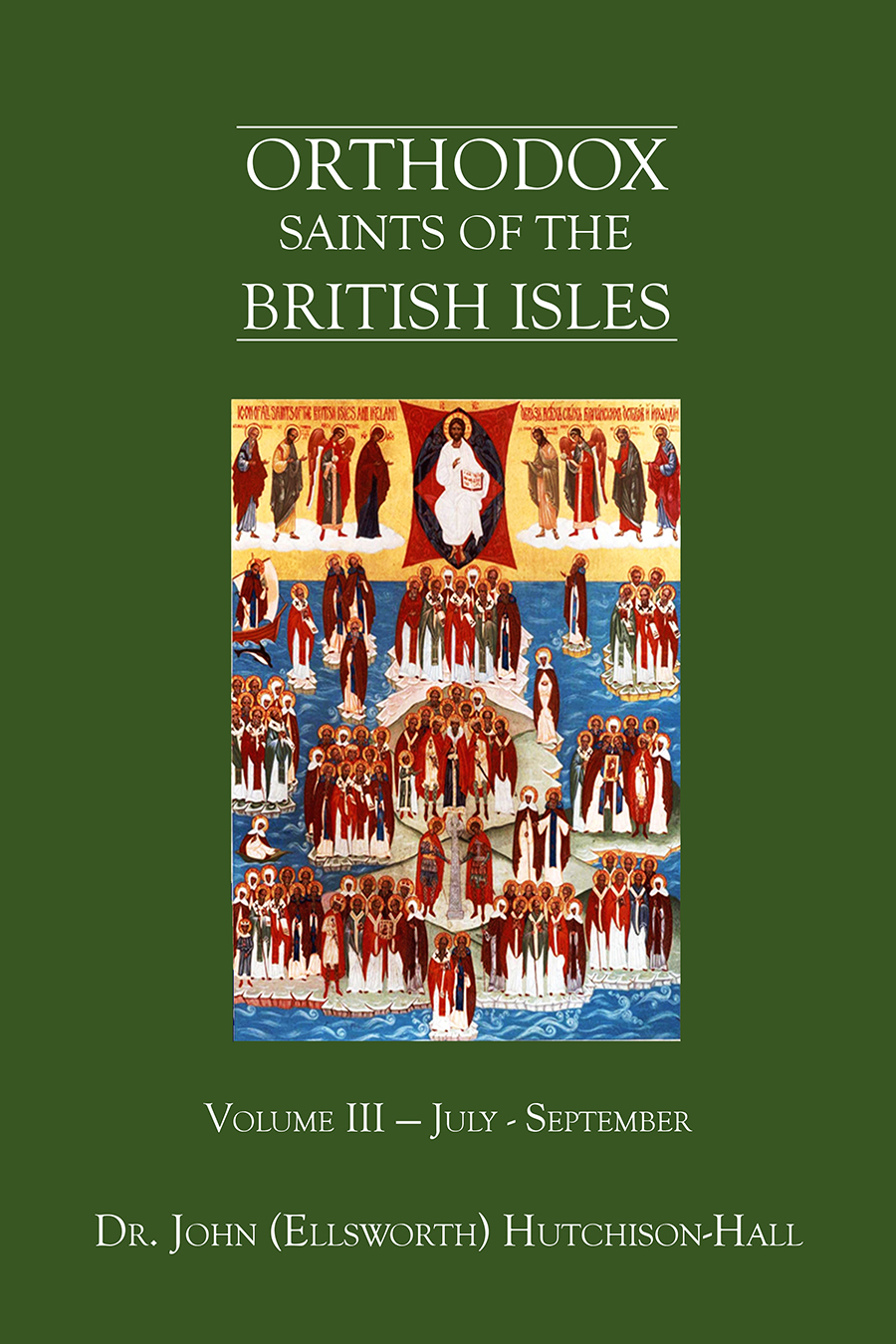
Orthodox Saints of the Pre-Schism
See of Rome
29th July (NS) — 16th July (OS) 2025
DOMNIO of BERGAMO, an uncle of St. Eusebia of Bergamo (29th October). Like his niece, St. Domnio was martyred at Bergamo in Lombardy (north-west Italy) by beheading during the Diocletianic Persecution (late third century).
GENEROSUS of POITOU, the Abbot of the Abbey of Saint-Jouin-de-Marnes in Poitou present-day south-western France. St. Generosus reposed circa 682.
HELIER of JERSEY, (Sixth Century), A native of Tongres in present-day Belgium, St. Helier went to Jersey in the Channel Islands where he lived as a hermit. He was martyred by the heathens he was endeavouring to convert to Christianity. St. Helier is the patron saint of Jersey and the capital, St. Helier, takes its name from him.
IRMENGARD, a great-granddaughter of Charlemagne, King of the Franks (r. 768–814), St. Irmengard served the Abbess of the Imperial Abbey of Buchau (Reichsstift Buchau) in Swabia (south-western Germany), and later the Imperial Abbey of Frauenchiemsee in Bavaria (southern Germany). St. Irmengard reposed in 866.
REINELDIS (RAINELDIS, REINALDES), GONDOLF, and GRIMOALD of SAINTES, Martyrs of Saintes, a nun at Saintes in Flanders (present-day Halle Belgium), daughter of St. Amalburga of Mauberge (10th July) and sister of St. Gudula of Brussels (8th January). St. Reineldis was martyred together with SS. Gondolf and Grimoald by the Huns circa 680.
SISENANDUS (SISENANDO) of CÓRDOBA, Martyr of Córdoba, a deacon in Córdoba. In 851, St. Sisenandus was beheaded after being charged with blasphemy during the reign of Emir Abd ar-Rahman II (r. 822–852).
TENENAN of LÉON, (Seventh Century), there is little information on this Saint extant, and that which is available is murky and not all that reliable. It seems he was originally from the British Isles and that he went to Brittany (north-western France), where he lived as an anchorite. At some point St. Tenenan was consecrated Bishop of Léon (south-western France). His relics were enshrined in Plabennec (Brittany).
VALENTINE of TREVES, according to the Roman Martyrology St. Valentine was an early fourth century Bishop of Treves (present-day Trier in Germany’s Rhineland-Palatinate). His absence from lists of prelates of that See have led many contemporary scholars to hypothesise that he is likely to be have been the Valentine who was Bishop of Tongeren and Maastricht (south-west Netherlands). Both are said to have been martyred circa 305, during the Diocletianic Persecution.
VITALIAN of OSIMO, an eighth century Bishop of Osimo in the Italian province of Ancona, who served that See for over three decades. St. Vitalian reposed in 776.
VITALIAN of CAPUA, (Date Unknown), a Bishop of Capua in Campania (southern Italy). No further information on his life is extant.
Get your copy of Orthodox Saints of the British Isles today.
Available at Amazon or your favourite e-bookstore.
FAUSTINUS of SPELLO, (Fourth Century), a disciple of St. Felix of Spello (18th May) a Bishop of Martano or Spello in Umbria (central Italy). St. Faustinus was St. Felix’s attendant at his martyrdom, and himself was tortured for Christ but not martyred, and later reposed peacefully in Todi in Umbria.
KILIAN of INNISCALTRA, (Seventh Century), St. Kilian was abbot of a monastery on the Island of Inniscaltra, and author of a Life of St. Brigid of Kildare (1st February). No further information on his life is extant.
LUPUS (LOUP, LEU) of TROYES, married to Pimeniola, a sister of St. Hilary of Arles (5th May), though after six years, they separated by mutual agreement. St. Lupus renounced his wealth and received monastic tonsure at the Abbey of Our Lady of Lérins (abbaye Notre Dame de Lérins) on one of the Lérins Islands in the Mediterranean Ocean off the Côte d’Azur in France. With great reluctance, St. Lupus was consecrated seventh Bishop of Troyes (north-central France) circa 426. He is often said to have been the same Lupus who accompanied St. Germanus of Auxerre (31st July) to Britain to assist in the eradication of Pelagianism. According to tradition, St. Lupus is credited with saving Troyes from sack by Attila the Hun in 453, however many modern scholars question the veracity of this. St. Lupus reposed 478.
MARTYRS of ROME, a group of Christians numbering twenty-three who were martyred in the persecutions Christians during the reign of Emperor Gallienus (r. 260–268). Aside from the names of these five, Eugene, Flora the Martyr, Lucilla, Rufo, and Theodore, there is no other information extant.
OLAV of NORWAY (OLAF, TOLA), repenting of a youth spent as a pirate, St. Olav in 1010 was baptised in Rouen, Brittany (north-western France), three years later he helped Æthelred II (the Unready), King of England (r. 979–1016) defend England against the Danes. Upon ascending to the throne in 1015, St. Olav immediately summoned missionaries, mainly from England, to enlighten his homeland. This was only partially successful, and pagans resisting this drove St. Olav from his kingdom. While fighting to recover his throne in 1030, St. Olav fell in battle at Stiklestad. Not long after St. Olav’s martyrdom, he was declared Rex Perpetuus Norvegiæ (Norway's Eternal King). St. Olav's memory is kept alive to this day in Norwegian culture; represented by the axe held by the lion in Norway’s arms, and Olsok (Olaf’s Vigil) on 29th July, is a national day of celebration.
PROSPER of ORLÉANS, an early Bishop of Orléans (north-central France), St. Prosper reposed circa 453.
SERAPIA of SYRIA, a native of Antioch who was a slave of a Roman noblewoman named Sabina. St. Serapia’s piety so moved her mistress who soon became a Christian too. In 119, during the persecution of Christians under the Emperor Hadrian (r. 117–138), St. Serapia was tortured and finally martyred by beheading.
SILIN (SULIAN), (Sixth Century), St. Silin was a brother of St. Cristiolus (3rd November), and the founder and first Abbot of a monastery at Luxulyan in Cornwall, England. There is some confusion surrounding the details of his life, and it is possible that he was either born in Brittany (north-western France), or spent time there.
SIMPLICIUS, FAUSTINUS, and BEATRIX of ROME, SS. Simplicius and Faustinus were two brothers who, during the Diocletianic Persecution circa 303, were beaten, beheaded, and their bodies thrown in to the Tiber. St. Beatrix, their sister, was strangled in prison seven months later.
Prior to the Schism the Patriarchate of Rome was Orthodox, and fully in communion with the Orthodox Church. As Saint John of Shanghai and San Francisco +1966 said “The West was Orthodox for a thousand years, and her venerable Liturgy is far older than any of her heresies”.
Details of British Saints excerpted from Orthodox Saints of the British Isles.
Details of continental saints from these sources.
In many cases there are several spelling versions of the names of saints from the British Isles. I use the Oxford Dictionary of National Biography version as the primary version with the more prevalent version in parenthesis e.g. Ceadda (Chad) of Lichfield.

